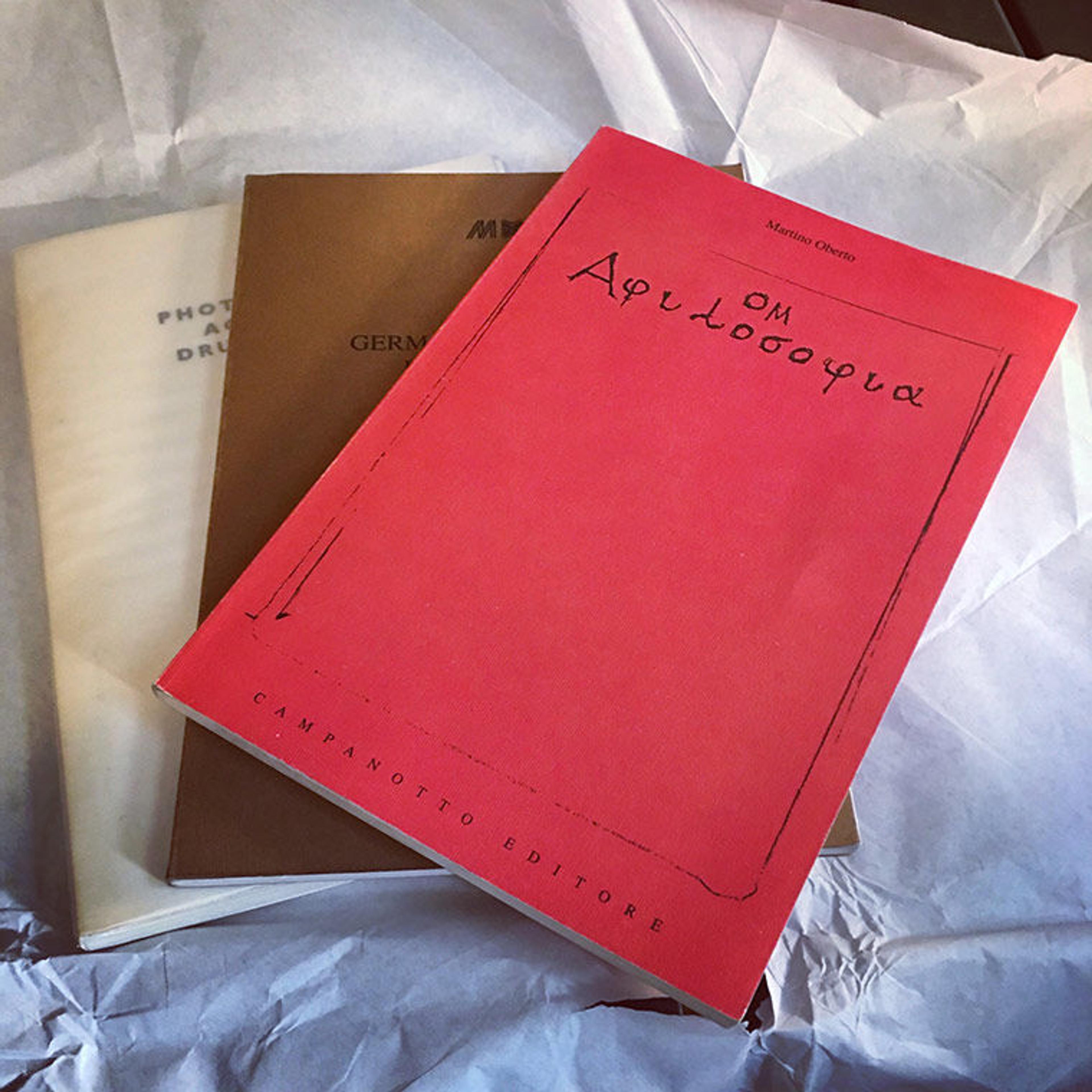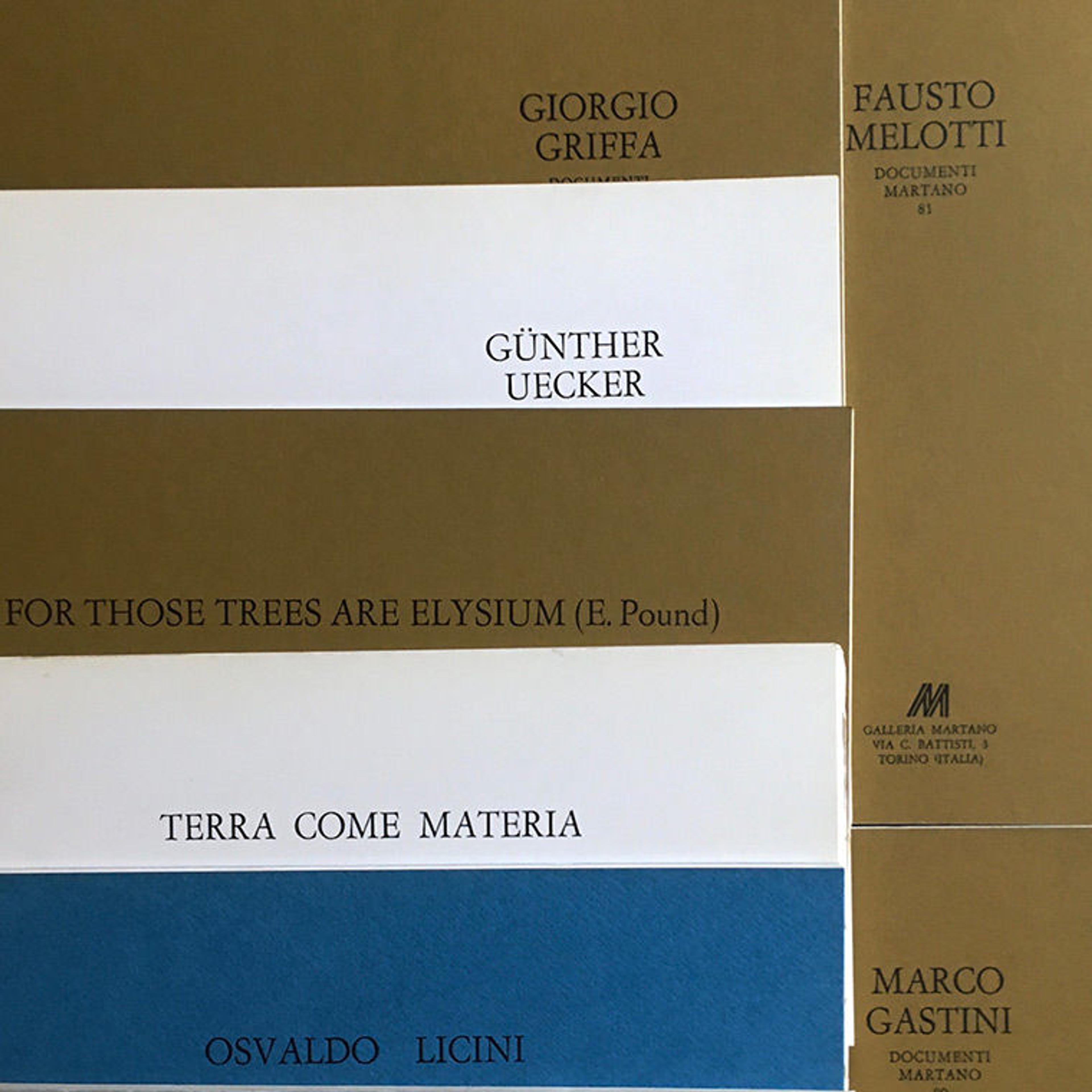
My work-from-home office set-up
Over the past year the pandemic has forced all of us to become our own personal MacGyver: maneuvering ordinary things—and in our case workflows—in unpredictable and innovative ways to get the job at hand completed. Case in point: Thomas J. Watson Library had a collection of publications from the Galleria Martano, an art gallery in Turin, Italy, that had been gifted to us by the inimitable Liliana Dematteis, an Italian gallery owner. While most of us were working from home cataloging electronic books in a home-accessible PDF format, this collection was languishing in the library awaiting cataloging.

Cover image from a Galleria Martano exhibition catalog: Hannah Höch, Hannah Höch 1889-1978: Collage (Stuttgart: Dr. Cantz'sche Druckerei, 1985)
At that point few staff members were allowed in the library and those folks were busy processing months of unopened boxes of books and periodicals. I was still working entirely remotely, so while cataloging 135 books was not a high priority for those going onsite, I was longing for a task that involved handling an actual physical item. Therefore, we decided to find a way to bring the books and the cataloger together.

Photographic reproduction from: Pierluigi Fresia, Pierluigi Fresia: Stasera La Luce È Cambiata: Galleria Martano, 9 Aprile-15 Maggio 2010 (Torino : Martano, 2010)
Under normal circumstances, the thought of shipping books in order to have a cataloger work on them at home would be ridiculous. A more efficient workflow is to have both book and cataloger in the same location where the books could more swiftly be moved about through a workflow that includes marking them as received, cataloging them, sending them to conservation for any treatment as needed, and then shelving the books. This workflow is more readily done in one building, but… with a pandemic and social distancing measures in place, old ways of doing things go out the window! So, the technical services department put their heads together and came up with a plan to have the books carefully shipped to me through UPS Ground service. I would catalog them from the comfort of my own home, and then I would ship them back.

Three books from the Galleria Martano collection unwrapped from their acid-free paper covering.
The books arrived in four boxes—each with a plastic bag swaddling the books with bubble wrap padding. Within the bags were several small groupings of books elaborately wrapped in acid-free paper. It was like Christmas morning for a bibliophile. I had a small, green camping table set up next to my desk where I would assiduously unwrap the books and examine them. And what a joy that was!

A selection of titles from the Documenti Martano series (1967 to 1994)
The Galleria Martano monographic collection is comprised of several exhibition catalogs and art-related books published by the Turin gallery. It was donated as a gift to the library by Liliana Dematteis, and you can read about her initial gift to us of her artists’ books collection in a colorful blog post by Sophia Alexandrov. You can also read a more thorough examination of some individual artist’s books in a delightful post by Deborah Vincelli. While artists’ books are always a pleasure to catalog because of their range of physical formats, artistic content, and raw materials, I also found this exhibition catalog collection to be quite fascinating. The completeness of the collection allows for a unique examination into the historical development of a specific art gallery within a particular city. It also offers a bibliographic snapshot of the artistic Zeitgeist of Turin from the 1960s to 2010s.

A selection of titles from Documenti Martano/Due series (1967 to1975)
The Galleria Martano was founded in 1965 in Turin by Liliana Dematteis and her husband, Giuliano Martano. Initially, Martano directed the gallery until his death in 1971, after which Dematteis took over the helm, but sagaciously suspended exhibition activity for a year. During the early 1970s she collaborated with Maurizio Fagiolo Dell’Arco, a renowned Italian art critic, by sponsoring a series of contemporary art conferences that were meant to embrace the entire art world: art critics, art historians, and artists alike. Initially, the gallery had two locations in Turin—one on Lungo Po Cadorna, the other on via Cesare Battisti. The original Galleria Martano location had a more traditional exhibition program, while the Galleria Martano/Due focused on Futurism and abstract art.

Three volumes from the Nadar series: Paolo Fossati, Il Movimento Arte Concreta, 1948–1958: Materiali E Documenti.(Torino: Martano, 1980); G.F. Maffina, Luigi Russolo E L'arte Dei Rumori: Con Tutti Gli Scritti Musicali (Torino: Martano, 1978); Gianni Rondolino, László Moholy-Nagy: Pittura, Fotografia, Film (Torino: Martano, 1975)
Dematteis has stressed the gallery’s keen interest in publishing avant-garde artists’ work which had been suppressed from the 1920 to the 1940s due to the Italian fascist regime. After 1973, the gallery revived its exhibitions in the direction of conceptual art and historical photography. In 1987, the gallery relocated to via Principe Amedeo, where the focus was on artists such as Marco Gastini, Eliseo Mattiacci, Gunther Uecker, Paolo Icaro, Piero Ruggeri, Dadamaino, and Pinot Gallizio. Throughout the years, the gallery kept in sight both the art historical past of Turin and the art of the present-day Turin, always looking to submit to the public view previously unexamined, banned, or neglected art. Dematteis remained in charge until the gallery closed its doors in 2013.

Reproduction of a Man Ray photograph of Meret Oppenheim from a Galleria Martano exhibition catalog: Ida Gianelli, Meret Oppenheim (Firenze: Alinari, 1983)

Photographic reproduction from: Pierluigi Fresia, Pierluigi Fresia: Stasera La Luce È Cambiata: Galleria Martano, 9 Aprile-15 Maggio 2010 (Torino : Martano, 2010)

Reproduction of a photographic self-portrait by Florence Henri from: Florence Henri, Florence Henri: Una Riflessione Sulla Fotografia (Torino: Martano, 1975)
The Galleria Martano publications can be found in Watsonline under the name of the gallery in an author search or by the series title under a title search. Watson Library is indebted to Liliana Dematteis for giving to us such an incredible collection for future research.

The Galleria Martano books are re-boxed and ready to be shipped back to the Thomas J. Watson Library.